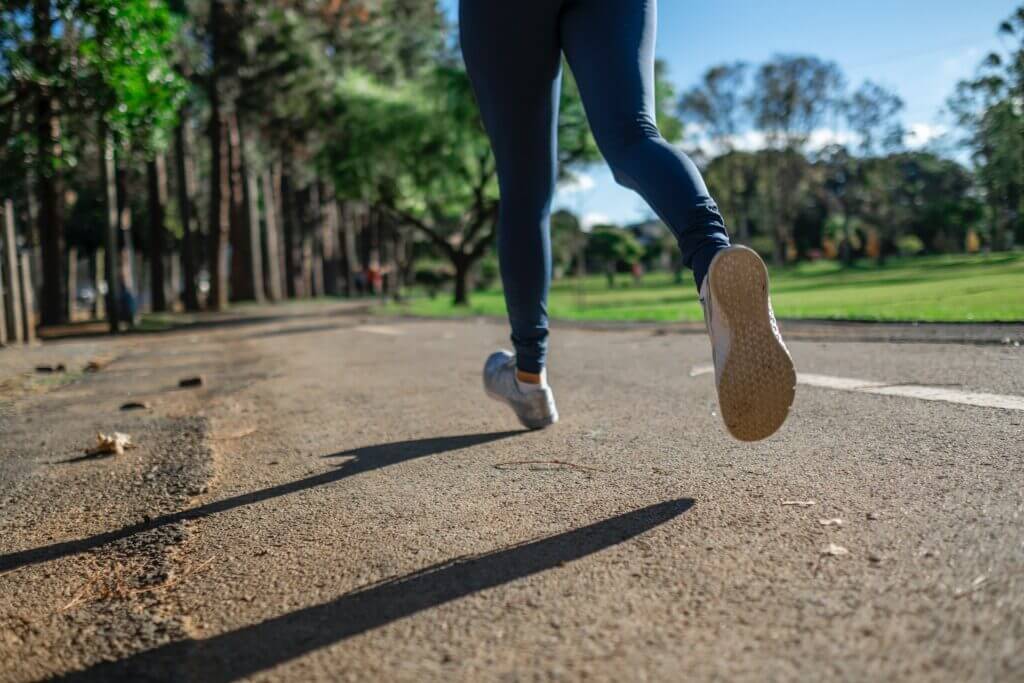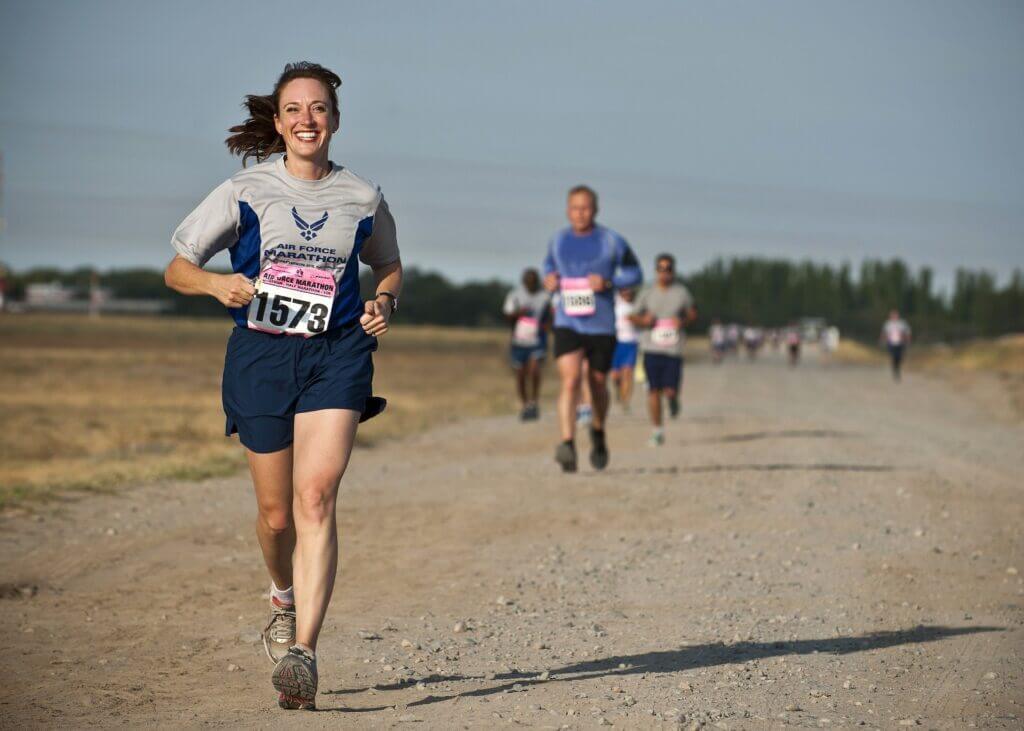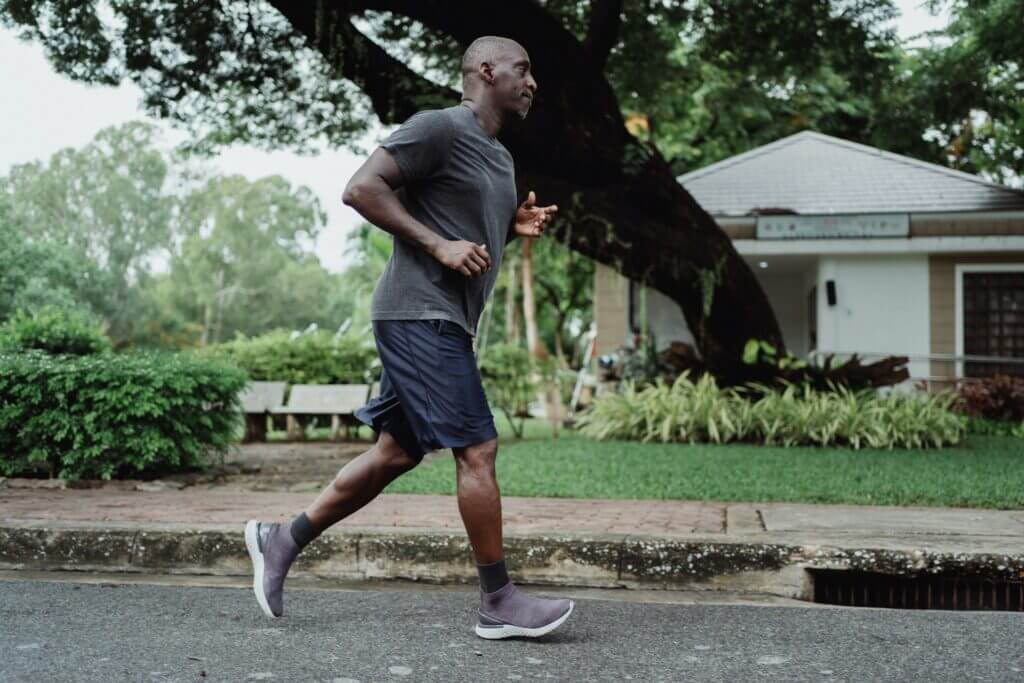Are you tired of feeling pain and discomfort every time you go for a run? Do you want to improve your running form and reduce your risk of injury? If so, then you need to learn how to stop heel striking – one of the most common problems for runners. By correcting your form and developing a midfoot or forefoot strike, you can protect your body and achieve greater efficiency and speed.
In this blog post, we’re going to share our top tips and techniques for preventing heel striking and developing a more natural and effective running stride. We’ll explain what heel striking is, why it’s a problem, and how to assess your running form to identify areas for improvement. We’ll also show you how to use strengthening exercises, proper footwear, and other tools to correct your form and avoid common injuries associated with heel striking.
So if you’re ready to take your running to the next level and avoid the pitfalls of heel striking, then keep reading. We’ve got all the information and guidance you need to become a stronger, healthier, and more efficient runner.
Table of Contents
What is heel striking?

Heel striking refers to the way a person’s foot lands on the ground when they walk or run. It occurs when the heel of the foot lands on the ground first, before the rest of the foot. Some people believe that heel striking is not the most efficient or safe way to run or walk, as it can cause more impact on the body and increase the risk of injuries.
Understanding the root causes of heel striking is crucial to preventing potential injuries and improving your overall running form. So, let’s dive deeper into the factors that can contribute to this phenomenon.
What causes heel striking?
Several factors can contribute to overstriding and heel striking. Some of the most common causes include:
- Weakness in the hips and glutes — When the hips and glutes are weak, the body may compensate by reaching forward with the foot to extend the stride, leading to overstriding and heel striking.
- Lack of flexibility — Tight muscles, particularly in the calves and hamstrings, can limit the range of motion in the ankle joint. This can make it difficult to land on the ball of the foot, leading to a heel strike.
- Improper footwear — Worn-out or poorly designed shoes can affect your gait, leading to an unnatural stride that can cause heel striking.
- Overtraining — Running too much or too often can lead to fatigue and improper form, which can contribute to heel striking.
- Running surface — Uneven or slippery surfaces can cause the foot to land awkwardly, leading to heel striking.
It’s important to identify the underlying cause of heel striking in order to address the issue and prevent injury. By addressing any imbalances or weaknesses and making adjustments to form or footwear, you can reduce the likelihood of heel striking and improve your overall running performance.
How it affects the body?

Heel striking, or the act of landing on the heel of the foot when running, can have negative effects on the body over time. This is because the heel is not designed to absorb shock, and landing on it repeatedly can lead to a variety of injuries.
One of the most common injuries associated with heel striking is plantar fasciitis, which is caused by inflammation of the plantar fascia, a thick band of tissue that runs along the bottom of the foot. This can cause pain and stiffness in the heel and arch of the foot, making it difficult to run or walk comfortably.
Another injury that can result from heel striking is shin splints, which occur when the muscles and tendons in the shin become overworked and inflamed. This can cause pain and discomfort along the front of the lower leg and can make it difficult to run or even walk.
In addition to these specific injuries, heel striking can also lead to more general issues with joint pain and muscle strain. When the body repeatedly absorbs shock through the heel, it can put undue stress on the joints and muscles in the lower legs and feet, leading to pain and inflammation.
Overall, the negative effects of heel striking on the body make it important for runners to work on developing a more natural, midfoot or forefoot strike in order to avoid these types of injuries and maintain long-term joint and muscle health.
By focusing on proper form and making adjustments to their running style, runners can improve their performance and avoid the negative impacts of heel striking.
Common injuries associated with heel striking

Common injuries associated with heel striking are often caused by the repetitive impact of the heel hitting the ground with force. Over time, this can lead to inflammation, pain, and other problems in the feet, legs, and even the back. Some of the most common injuries that heel strikers may experience include:
- Plantar Fasciitis
This is a painful condition that affects the plantar fascia, a thick band of tissue that runs along the bottom of the foot. Heel striking can put extra stress on the plantar fascia, causing micro-tears and inflammation that leads to pain in the heel and arch of the foot.
- Shin Splints
Shin splints are a common overuse injury that affects the muscles and tendons in the lower leg. Heel striking can cause excessive stress on the shins, leading to inflammation, pain, and tenderness.
- Stress Fractures
A stress fracture is a small crack in a bone that develops over time due to repetitive stress. Heel strikers may be at increased risk for stress fractures in the feet or lower legs because of the constant pounding on hard surfaces.
- Achilles Tendinitis
The Achilles tendon is the largest tendon in the body and connects the calf muscle to the heel bone. Heel striking can put extra stress on the Achilles tendon, causing micro-tears and inflammation that leads to pain and stiffness in the calf and heel.
- Lower Back Pain
Heel striking can also affect the alignment of the body and put extra stress on the lower back. Over time, this can lead to pain and discomfort in the lower back.
It’s important to note that not all runners who heel strike will experience these injuries, but the risk is increased with improper form. If you’re experiencing pain or discomfort while running, it’s a good idea to consult with a healthcare professional or running coach to evaluate your form and make any necessary adjustments.
How to determine if you’re a heel striker?

To determine whether you’re a heel striker, there are a few methods you can use. Firstly, you can self-observe while running on a treadmill or a flat surface and pay attention to where your foot lands first. If your heel touches the ground first, you are most likely a heel striker.
Alternatively, you could record a video of yourself running and watch it in slow motion to see where your foot strikes the ground, especially the heel. Another way is to examine the wear pattern on the soles of your running shoes. If the outer heel is considerably worn down, it may indicate that you’re a heel striker.
Finally, some running stores offer gait analysis, where a professional can observe your running form and determine if you’re a heel striker. They may also recommend shoes or inserts that can help improve your form.
It’s essential to note that even if you’re a heel striker, it’s possible to improve your form with the right exercises, footwear, and adjustments to your stride. This can help reduce the risk of injury and improve running efficiency.
How to stop heel striking?
Heel striking can be a difficult habit to break, but with a few adjustments to your form and technique, it’s possible to make significant improvements. Here are some tips for correcting heel striking and transitioning to a midfoot or forefoot strike:
1. Strengthening exercises to improve form
Strengthening exercises are an effective way to improve your form and avoid heel striking. By targeting specific muscles in your legs and feet, you can develop a stronger, more stable stride that allows you to land on the midfoot or forefoot instead of the heel.
Here are some exercises that can help you strengthen the right muscles and improve your running form:
- Calf Raises
This exercise targets the muscles in your calves, which play a crucial role in foot and ankle stability during running. To perform calf raises, stand with your feet hip-width apart and lift your heels off the ground as high as possible. Hold for a few seconds and then lower your heels back down. Repeat for several sets.
- Toe Taps
Toe taps help improve your balance and foot placement. To perform toe taps, stand on one foot and tap your other foot lightly on the ground in front of you. Alternate feet and aim for a steady, controlled motion.
- Ankle Circles
This exercise helps to improve flexibility and mobility in your ankles, which can help prevent heel striking. To perform ankle circles, sit on the ground with your legs extended in front of you. Point your toes and circle your ankles in one direction, then reverse the direction.
- Single-Leg Deadlifts
This exercise helps to improve your balance, stability, and overall strength. Stand on one leg and slowly lower your upper body towards the ground while keeping your back straight. Return to the standing position and repeat on the other leg.
- Jumping Rope
Jumping rope is an excellent cardiovascular workout that also helps to strengthen the muscles in your feet and legs. Start slowly and gradually increase your speed and duration as you get more comfortable.
These exercises are just a few examples of the many ways you can strengthen your muscles and improve your form to avoid heel striking. Incorporate them into your regular routine along with other strengthening exercises to see the best results. Remember to start slowly and gradually increase the intensity to avoid injury.
2. Developing a midfoot or forefoot strike

Developing a midfoot or forefoot strike is one of the most effective ways to correct heel striking and improve your running form. This involves landing on the middle or front part of your foot rather than your heel. Here are some tips and techniques for making this transition:
- Focus on Foot Placement
One of the biggest differences between heel striking and midfoot or forefoot striking is where your foot lands. To develop a midfoot or forefoot strike, focus on landing with the ball of your foot just behind your toes. This will take practice, so start by practicing short strides and gradually build up your distance.
- Practice Good Posture
Proper posture is crucial for running with a midfoot or forefoot strike. Keep your shoulders relaxed and your back straight, and avoid leaning forward or back. Focus on maintaining an upright posture and keeping your body in a straight line.
- Shorten Your Stride
A shorter stride is typically necessary when switching from a heel strike to a midfoot or forefoot strike. This helps prevent overstriding, which can lead to injury. Focus on taking shorter, quicker steps rather than long, lunging strides.
- Engage Your Core
Engaging your core muscles can help you maintain proper form and prevent excessive forward or backward movement. Try tightening your abdominal muscles as you run, and keep your torso stable and controlled.
- Wear the Right Shoes
Wearing shoes with a lower heel-to-toe drop can help facilitate a midfoot or forefoot strike. Look for shoes with a drop of 8mm or less, and avoid shoes with excessive cushioning in the heel.
- Gradually Increase Mileage
Making the switch to a midfoot or forefoot strike can take time and practice, so it’s important to be patient. Start by practicing shorter distances, such as 1-2 miles, and gradually build up your mileage as your body adapts to the new form.
By focusing on foot placement, posture, stride length, core engagement, footwear, and gradual progress, you can successfully develop a midfoot or forefoot strike and improve your running form. Remember that proper form takes practice, so don’t get discouraged if it doesn’t feel natural at first. With time and patience, you’ll see the benefits of a midfoot or forefoot strike and reduce your risk of injury.
3. Adjusting stride length and cadence
When it comes to correcting heel striking, one effective technique is adjusting your stride length and cadence. Stride length refers to the distance covered by each step, while cadence refers to the number of steps you take per minute. Here are some tips for making these adjustments:
Increase Cadence — One of the most effective ways to reduce heel striking is to increase your cadence. Aim for a cadence of at least 180 steps per minute. You can use a metronome or a running app that tracks your cadence to help you maintain a consistent pace.
Shorten Stride Length — When you overstride, your heel tends to strike the ground first. Shortening your stride can help you avoid this problem. Focus on taking shorter, quicker steps to reduce the distance between each footfall. Keep your feet closer to the ground and focus on landing midfoot or forefoot.
Avoid Overstriding — Another common issue that leads to heel striking is overstriding. This occurs when your foot lands too far in front of your body. Try to avoid extending your leg too far forward with each step. Instead, land your feet beneath your body.
Practice Drills —Incorporate drills into your training to help you practice proper form. For example, try running with a metronome set to a faster cadence than your usual pace. This can help you get used to taking shorter, quicker steps.
Remember that adjusting your stride length and cadence takes time and practice. Start by focusing on one aspect at a time, such as increasing your cadence, and gradually work your way up to making more significant changes.
Pay attention to how your body feels as you make these adjustments and adjust as needed to avoid injury or discomfort. With consistent practice, you can break the habit of heel striking and develop a more efficient and injury-resistant running form.
4. Using proper footwear

Using proper footwear is essential for preventing heel striking and promoting proper running form. Here are some tips for selecting the right shoes:
- Look for shoes with a low heel-to-toe drop — Heel-to-toe drop refers to the difference in height between the heel and the forefoot of a shoe. Running shoes with a high heel-to-toe drop encourages heel striking, while those with a lower drop promote a midfoot or forefoot strike. Look for shoes with a drop of 8mm or less.
- Choose shoes with ample cushioning — Cushioned shoes absorb shock and reduce the impact on your feet and legs. Look for shoes with cushioning in the midsole and heel to protect against the jarring impact of heel striking.
- Find shoes with a wider toe box — A wider toe box allows your toes to splay out and grip the ground, promoting a more natural foot strike. It also prevents blisters and calluses from forming on your toes.
- Get fitted by a professional — Visit a running store and have a professional assess your gait and foot shape. They can recommend shoes that are specifically designed for your needs, and ensure that they fit properly.
- Replace your shoes regularly — Running shoes lose their cushioning and support over time, and can cause you to revert to poor form. Replace your shoes every 300-500 miles, or when you notice signs of wear and tear.
By following these tips, you can ensure that you’re wearing the right shoes to support your running form and prevent heel striking. Remember that the right footwear is just one piece of the puzzle – it’s also important to focus on form and technique to ensure that you’re running efficiently and safely.
Prevention and Maintenance
In addition to correcting your form, there are several preventative measures you can take to avoid heel striking and maintain proper running form.
Stretching and Foam Rolling
Stretching and foam rolling is essential for keeping your muscles healthy and flexible. Incorporate a stretching routine before and after your runs, focusing on your calves, hamstrings, and quadriceps. Foam rolling can also help release any tightness in your muscles, making it easier to maintain proper form.
Avoid Overtraining
Overtraining can lead to muscle fatigue and injury, which can contribute to poor form and an increased risk of heel striking. Make sure to give your body time to rest and recover between runs, and gradually increase your mileage to avoid pushing your body too hard too soon.
Listen to Your Body
If you’re experiencing pain or discomfort while running, it’s important to listen to your body and adjust your routine accordingly. Ignoring pain can lead to more serious injuries and further setbacks. If you’re struggling with heel striking, take the time to assess your form and make adjustments as needed.
Use Proper Footwear
Wearing the right shoes is crucial for maintaining good form and avoiding heel striking. Look for shoes with a low heel-to-toe drop and good arch support, and make sure they fit properly. It’s also important to replace your shoes regularly to avoid worn-out soles and reduced support.
By incorporating these preventative measures into your running routine, you can help maintain proper form and avoid the risks associated with heel striking. Remember to take care of your body and listen to its needs, and you’ll be well on your way to becoming a stronger, injury-free runner.
Conclusion
In conclusion, heel striking is a common problem among runners that can lead to a variety of injuries and health issues. However, with proper understanding and technique, it is possible to correct this problem and improve your running form.
By assessing your stride, strengthening key muscles, and making adjustments to your technique, you can transition to a more natural, efficient gait and reduce your risk of injury.
Remember, it’s important to take care of your body and listen to its signals, so make sure to incorporate proper stretching and maintenance into your routine as well. With these tips and techniques, you can become a better runner and enjoy the many benefits that come with a healthy, injury-free lifestyle.


